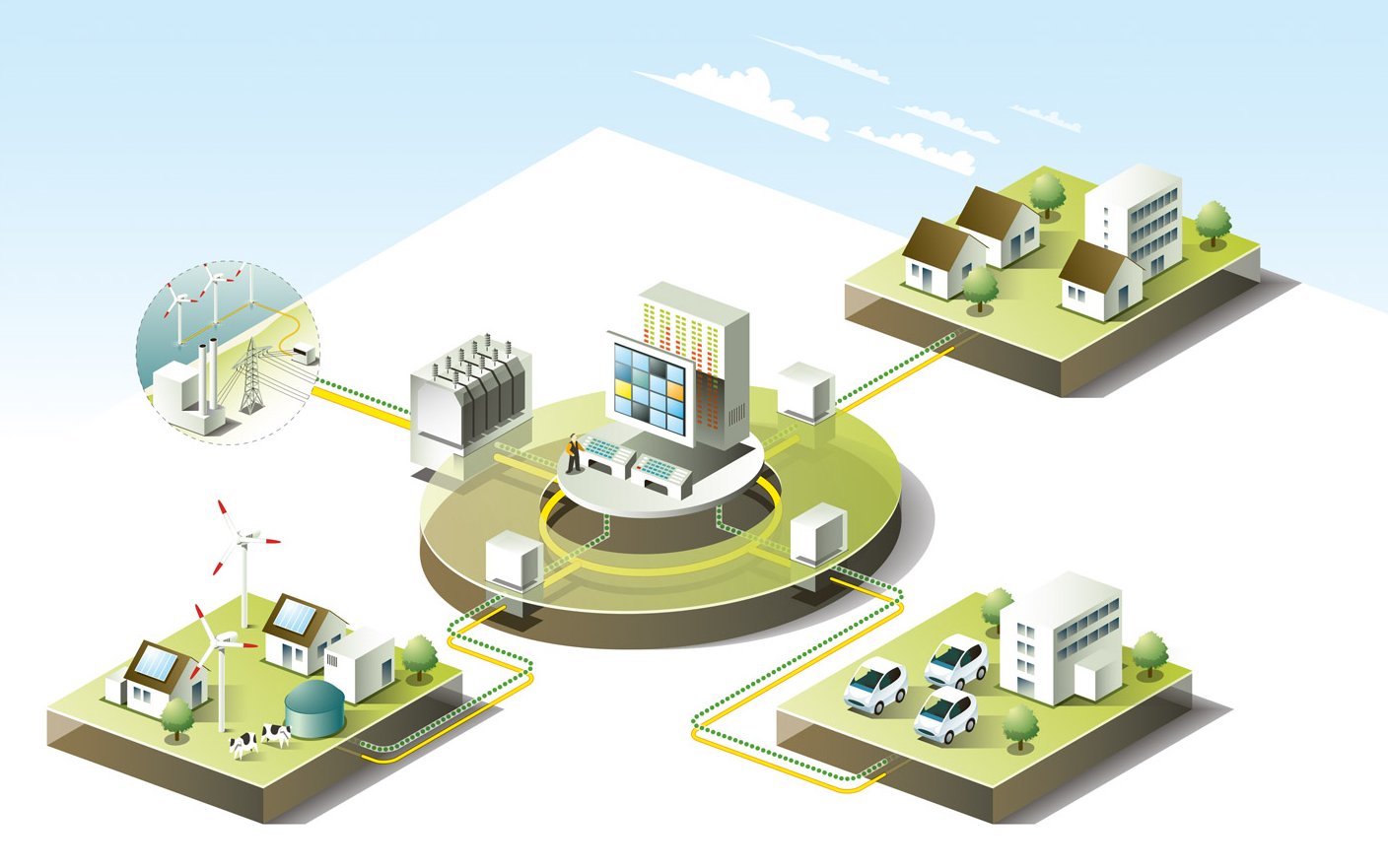Market Overview: The Distributed Energy Generation (DEG) Market refers to the market for decentralized energy generation systems that produce electricity closer to the point of consumption. DEG systems include solar photovoltaic (PV) panels, wind turbines, small-scale gas turbines, fuel cells, and microgrids. These systems offer benefits such as increased energy efficiency, reduced transmission losses, enhanced grid resilience, and the potential for utilizing renewable energy sources. The global distributed energy generation market size was valued at $246.4 billion in 2020, and is forecasted to reach $919.6 billion by 2030, growing at a CAGR of 14.2% from 2021 to 2030.
Demand: The demand for distributed energy generation is driven by several factors, including:
- Energy Security and Reliability: DEG systems provide an alternative to centralized power generation, reducing reliance on large-scale power plants and transmission networks. This enhances energy security and helps ensure a reliable electricity supply, particularly in areas prone to grid disruptions or remote locations with limited grid access.
- Environmental Concerns and Renewable Energy Transition: Growing concerns about climate change and the need to reduce greenhouse gas emissions have spurred the adoption of distributed energy generation systems. These systems enable the integration of renewable energy sources such as solar and wind power, supporting the global transition to cleaner energy alternatives.
- Energy Access and Rural Electrification: DEG systems play a vital role in expanding energy access in remote and underdeveloped regions. By generating electricity locally, they provide a cost-effective and sustainable solution for rural electrification, helping bridge the energy access gap and improving the quality of life for communities.
Scope: The scope of the distributed energy generation market covers various sectors and applications, including:
- Residential: Distributed energy generation systems are increasingly adopted by homeowners to generate electricity on-site. Residential solar panels and small wind turbines enable households to reduce their reliance on the grid, lower electricity bills, and contribute to environmental sustainability.
- Commercial and Industrial: Commercial and industrial facilities deploy distributed energy generation systems to offset their electricity demand and reduce operating costs. These systems can be integrated into the building’s infrastructure or implemented as microgrids, enhancing energy resilience and supporting business continuity.
- Remote Applications: Distributed energy generation finds applications in remote locations such as off-grid communities, islands, and mining sites. These systems provide a reliable and sustainable energy source, eliminating the need for costly and environmentally damaging diesel generators.
Trends:
- Increasing Penetration of Renewables: Distributed energy generation systems are witnessing a significant increase in the integration of renewable energy sources, such as solar and wind power. Falling costs of renewable technologies and supportive government policies drive this trend, enabling a greener and more sustainable energy mix.
- Grid Modernization and Energy Management: The integration of DEG systems is driving the need for grid modernization and advanced energy management solutions. Smart grid technologies, energy storage systems, and demand response programs are becoming increasingly important to ensure efficient integration and optimize energy utilization.
- Digitalization and IoT Integration: The digitalization of DEG systems and the integration of Internet of Things (IoT) technologies enable real-time monitoring, remote control, and data analytics. These advancements enhance system performance, enable predictive maintenance, and facilitate energy optimization for both consumers and grid operators.
Global Opportunities: The distributed energy generation market presents several global opportunities, including:
- Developing Countries and Emerging Markets: Developing countries with growing energy demand and limited grid infrastructure represent significant opportunities for distributed energy generation. These regions can leapfrog traditional centralized power generation models and transition directly to decentralized energy systems.
- Decentralized Energy Solutions for Urban Areas: Urban areas face challenges of grid congestion, demand variability, and increasing energy demand. Distributed energy generation can offer localized solutions to meet the specific energy needs of urban communities, including rooftop solar installations, district energy systems, and microgrids.
Challenges: The distributed energy generation market also faces certain challenges, including:
- Grid Integration and Regulatory Frameworks: The integration of distributed energy generation systems into existing grids can be challenging due to technical and regulatory complexities. Grid interconnection standards, power purchase agreements, and grid stability considerations need to be addressed to ensure smooth integration and market participation.
- Initial Costs and Financing: The upfront costs associated with installing distributed energy generation systems can be a barrier to adoption. Access to financing options and supportive policies that incentivize distributed energy projects are essential to overcome this challenge.
- Grid Resilience and Stability: The increased penetration of distributed energy generation systems introduces challenges related to grid stability and resilience. The intermittent nature of renewable energy sources and the need for grid balancing mechanisms require advanced grid management and energy storage solutions.
Overall, the distributed energy generation market offers substantial opportunities driven by energy security concerns, environmental sustainability goals, and the need for energy access. Overcoming challenges related to grid integration, financing, and grid stability will be critical to realizing the full potential of distributed energy generation and maximizing its benefits on a global scale.
By visiting our website or contacting us directly, you can explore the availability of specific reports related to this market. These reports often require a purchase or subscription, but we provide comprehensive and in-depth information that can be valuable for businesses, investors, and individuals interested in this market.
“Remember to look for recent reports to ensure you have the most current and relevant information.”
Click Here, To Get Free Sample Report: https://stringentdatalytics.com/sample-request/distributed-energy-generation-market/10963/
Market Segmentations:
Global Distributed Energy Generation Market: By Company
- Bloom Energy
- Capstone Turbine
- General Electric
- Huawei Technologies
- Schneider Electric
- Siemens
- Ballard
- Enercon
- Goldwind
- SMA Solar Technology
- Suzlon
- Yingli Solar
Global Distributed Energy Generation Market: By Type
- Solar PV
- CHP
- Fuel cells
- Wind Power
- Other
Global Distributed Energy Generation Market: By Application
- Rural Areas
- Urban Areas
Global Distributed Energy Generation Market: Regional Analysis
The regional analysis of the global Distributed Energy Generation market provides insights into the market’s performance across different regions of the world. The analysis is based on recent and future trends and includes market forecast for the prediction period. The countries covered in the regional analysis of the Distributed Energy Generation market report are as follows:
North America: The North America region includes the U.S., Canada, and Mexico. The U.S. is the largest market for Distributed Energy Generation in this region, followed by Canada and Mexico. The market growth in this region is primarily driven by the presence of key market players and the increasing demand for the product.
Europe: The Europe region includes Germany, France, U.K., Russia, Italy, Spain, Turkey, Netherlands, Switzerland, Belgium, and Rest of Europe. Germany is the largest market for Distributed Energy Generation in this region, followed by the U.K. and France. The market growth in this region is driven by the increasing demand for the product in the automotive and aerospace sectors.
Asia-Pacific: The Asia-Pacific region includes Singapore, Malaysia, Australia, Thailand, Indonesia, Philippines, China, Japan, India, South Korea, and Rest of Asia-Pacific. China is the largest market for Distributed Energy Generation in this region, followed by Japan and India. The market growth in this region is driven by the increasing adoption of the product in various end-use industries, such as automotive, aerospace, and construction.
Middle East and Africa: The Middle East and Africa region includes Saudi Arabia, U.A.E, South Africa, Egypt, Israel, and Rest of Middle East and Africa. The market growth in this region is driven by the increasing demand for the product in the aerospace and defense sectors.
South America: The South America region includes Argentina, Brazil, and Rest of South America. Brazil is the largest market for Distributed Energy Generation in this region, followed by Argentina. The market growth in this region is primarily driven by the increasing demand for the product in the automotive sector.
Visit Report Page for More Details: https://stringentdatalytics.com/reports/distributed-energy-generation-market/10963/
Reasons to Purchase Distributed Energy Generation Market Report:
- Comprehensive Market Insights: Global research market reports provide a thorough and in-depth analysis of a specific market or industry. They offer valuable insights into market size, growth potential, trends, challenges, and opportunities, helping businesses make informed decisions and formulate effective strategies.
- Market Analysis and Forecasts: These reports provide detailed analysis and forecasts of market trends, growth rates, and future market scenarios. They help businesses understand the current market landscape and anticipate future market developments, enabling them to plan and allocate resources accordingly.
- Competitive Intelligence: Global research market reports provide a competitive landscape analysis, including information about key market players, their market share, strategies, and product portfolios. This information helps businesses understand their competitors’ strengths and weaknesses, identify market gaps, and develop strategies to gain a competitive advantage.
- Industry Trends and Insights: These reports offer insights into industry-specific trends, emerging technologies, and regulatory frameworks. Understanding industry dynamics and staying updated on the latest trends can help businesses identify growth opportunities and stay ahead in a competitive market.
- Investment and Expansion Opportunities: Global research market reports provide information about investment opportunities, potential markets for expansion, and emerging growth areas. These reports help businesses identify untapped markets, assess the feasibility of investments, and make informed decisions regarding expansion strategies.
- Risk Mitigation: Market reports provide risk assessment and mitigation strategies. By analyzing market dynamics, potential challenges, and regulatory frameworks, businesses can proactively identify risks and develop strategies to mitigate them, ensuring better risk management and decision-making.
- Cost and Time Efficiency: Conducting comprehensive market research independently can be time-consuming and expensive. Purchasing a global research market report provides a cost-effective and time-efficient solution, saving businesses valuable resources while still gaining access to reliable and detailed market information.
- Decision-Making Support: Global research market reports serve as decision-making tools by providing data-driven insights and analysis. Businesses can rely on these reports to support their decision-making process, validate assumptions, and evaluate the potential outcomes of different strategies.
In general, market research studies offer companies and organisations useful data that can aid in making decisions and maintaining competitiveness in their industry. They can offer a strong basis for decision-making, strategy formulation, and company planning.
About US:
Stringent Datalytics offers both custom and syndicated market research reports. Custom market research reports are tailored to a specific client’s needs and requirements. These reports provide unique insights into a particular industry or market segment and can help businesses make informed decisions about their strategies and operations.
Syndicated market research reports, on the other hand, are pre-existing reports that are available for purchase by multiple clients. These reports are often produced on a regular basis, such as annually or quarterly, and cover a broad range of industries and market segments. Syndicated reports provide clients with insights into industry trends, market sizes, and competitive landscapes. By offering both custom and syndicated reports, Stringent Datalytics can provide clients with a range of market research solutions that can be customized to their specific needs
Contact US:
Stringent Datalytics
Contact No – +1 346 666 6655
Email Id – sales@stringentdatalytics.com




Leave a Reply